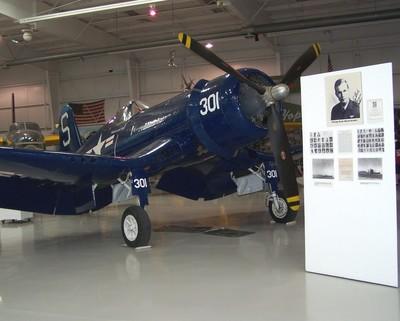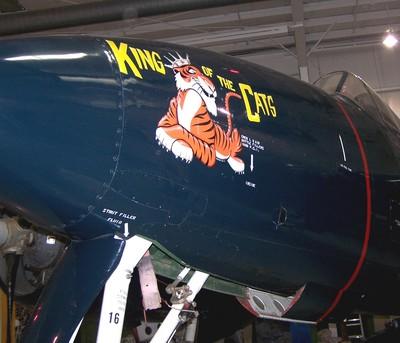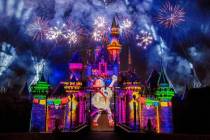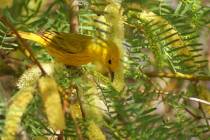Aviation Wonders
Palm Springs Air Museum isn't the biggest in its field, but few manage to convey so well the role of American aviation in World War II. Its 40,000-square-foot building, and the very tarmac behind it, simply bulge with history. If you are even marginally interested in what was arguably the most important event of the 20th century, this is a place not to be missed.
Everything sparkles -- the planes, the floors and the displays. For each highly polished plane there are complete descriptive materials, and knowledgeable docents readily share additional information about pilots, aircraft and events. More often than not, their knowledge doesn't comes from books but rather from firsthand experience -- from flying in the planes, working around them, or helping build them during the war.
If the docents and display print materials leave you hungry for more information, throughout the museum are chairs grouped around TV monitors, which show documentaries and other videos about various aircraft. Also, there's a library where visitors can review war era magazines and books -- and there are even aviation-related computer games, too.
The museum has two hangars as display areas. One is dedicated to the war in the Pacific and the other to the war in Europe. The Pacific Hangar is mostly about naval aviation and has a preponderance of carrier-based fighters and fighter-bombers. The European Hangar, on the other hand, emphasizes Army Air Force planes -- fighters and bombers. Regardless of the hangar you enter, you're immediately surrounded by historic aircraft.
Most air museums have a few aircraft that are still flyable, but static displays are more the norm. At the Palm Springs Air Museum, the reverse is true: Only a few of the planes can't fly. Most are operational and are frequently flown at air shows around the country. In addition, many are movie stars.
For example, the 2001 movie, "Pearl Harbor," used the museum's Spitfire and P-40 fighters and B-25 Mitchell bomber in several scenes. The planes were repainted to match aircraft in service in late 1941. The same is true of planes appearing in other films such as "Forever Young," "Iron Eagle III" and "Winds of War," and in the TV shows such as "Remington Steele" and "Black Sheep Squadron."
Besides planes, the museum has memorabilia -- lots of it. For example, on walls in both hangars are framed newspaper front pages from the war years, with huge headlines describing events from the attack on Pearl Harbor, to V-E and V-J Days. The headlines between describe the ebb and flow of the historic war, and life on the home front, capturing the anxiety of times when the outcomes were still in doubt.
Along the walls in each hangar are displays showing the social and military contexts in which the air war was waged.
One exhibit depicts women at war -- those who served in the armed services, those at home who took over for men in factories and others who remained homemakers but had to find new ways to supply household necessities. Gasoline, rubber products, sugar, meat and many other supplies were rationed during the war. Examples of ration books can be seen.
In one display case is a small booklet titled, "48 Hours in London," along with items supplied to GIs off for a weekend to see the city.
In the War In Europe Hangar, most displays are in Quonset huts, those buildings shaped like a half-cylinder, made from corrugated steel, quickly erected, and used by the military during the war for everything from shops to offices to living quarters.
Naturally, one of the most detailed exhibits in the Pacific Hanger relates to the bombing of Pearl Harbor. There is a relief map of Pearl Harbor, with numbered sites. An audio description references the map and numbered sites to describe the events of Dec. 7, 1941. It helps visitors grasp the scope of the attack and the damage rendered.
A nearby wall display contains enemy artifacts from the raid: a singed Japanese parachute and bits of metal from a downed Japanese plane.
Former President George H.W. Bush was a Navy pilot before and during WWII. One display shows photos of the six different aircraft he flew, starting with a rickety NK-1 biplane trainer and ending with the F4U Corsair, a carrier-based plane much respected in its time, and the last combat plane he flew.
Although it's an air museum, there is "Warship Row," which contains detailed models of the various ships used by the U.S. during the war -- from battleships to submarines -- with cutaway sections so you can see not just main decks but inside of the ships too.
"I shall return," famous words uttered by General Douglas MacArthur as he left the Philippines for Australia in 1942, are shown being fulfilled in the photo of MacArthur wading ashore from a landing craft to the ultimate liberation of the Philippines. It's just one of many pictures in the photomural "History's Largest Naval Battle: The Battle for Leyte Gulf," which took place in October 1944. It's adjacent to Warship Row, and nearby are copies of the surrender documents signed by the Japanese in August 1945, and photos of the event, aboard the battleship Missouri.
The representation of a USO stage, with life-size photos of Bob Hope and other performers, honors the celebrities who traveled to war zones to entertain the troops.
On the tarmac, at the rear of the museum building, is a B-17 Flying Fortress. For a small additional charge ($3) you can tour the huge plane from its flight deck to its tail gun. B-17s were the workhorse bombers in the European campaign. More than 12,000 were built, but today only nine are operational, including this one.
Some of the planes have fine examples of what has become known as "nose art." During World War II especially, almost every bomber was given a name, usually by the plane's ground crew chief. The name might include the pilot's name, hometown, wife or sweetheart's name or the like. Along with the name, there was artwork, often as not a scantly clad female form. The artwork was on the "nose" of the plane.
For example, the B-25 bomber's nose art proclaims it "Mitch the Witch II," displaying a shapely "witch" in red gown and red pointed hat, with a huge American flag. The "Mitch" is for Mitchell bomber, another designation for the B-25.
The P-63 Kingcobra has "Pretty Polly" emblazoned on the nose cowling on its left side -- along with the image of a young blond woman in a short red dress.
Not all nose art is about sexy looking women. For example, one of the P-51 Mustangs on display actually has two names -- "Dakota Kid II," and "Long Island Kid." There's no woman drawn there, just the names. On a F7F Tigercat fighter bomber, in the Pacific Hangar, there's the image of a smiling tiger, wearing a crown, and the name "King of the Cats" in large gold letters above it.
There's usually at least one classic car on display at the museum. When I visited there, a burgundy-colored 1941 Studebaker Commander was parked beneath the wing of the B-25. Restored to perfection, it shone, and looked right at home with the aircraft.
The planes on display at the Palm Springs Air Museum range from an example of a Boeing Stearman PT17 Kaydet biplane trainer, used prior to and early during World War II, to the celebrated P-51 Mustang fighters, to bombers such as a B-25 Mitchell Bomber and the B-17 Flying Fortress. Most are flight worthy. All are restored to the splendor of youth, pretty as the Polly of nose-art notoriety.
GETTING THERE Location: Palm Springs Air Museum in Palm Springs, Calif., about 285 miles from Las Vegas. Directions: Take Interstate 15 south toward Los Angeles, for approximately 215 miles. Bear left onto Interstate 215 south toward San Bernardino/Riverside for approximately 14 miles. Take Interstate 10 exit toward Redlands/Indio, approximately 51 miles. Take Palm Drive exit toward Desert Hot Springs, turn right onto North Gene Autry Trail, and drive 3.3 miles to museum. Dining: Cactus Jack's Cafe is just a couple of blocks south of the museum at 145 S. Gene Autry Trail. (760) 323-2210. Lodging: Make reservations before going. Palm Springs is a resort city with many lodgings, but a moderately priced yet well-rated one is the Vagabond Inn Palm Springs at 1699 S. Palm Canyon Drive; (760) 325-7211. See sites below for other options. Visitor information: Palm Springs Chamber Of Commerce (760) 325-1577, www.pschamber.org; Palm Springs Bureau Of Tourism, www.palm-springs.org.























